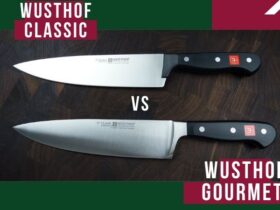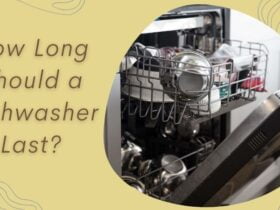The two most common types of woks you can find are cast iron and carbon steel. Cast Iron is a heavier material, which may be preferred by some chefs because of its weight. Carbon Steel is lighter than cast iron but has a tendency to stick more easily. This post will go into detail about the differences between these two materials and what they offer so that you know which one would best suit your needs as a chef.
While many people might not think there is much difference between the two different types of woks, at Iron Door Saloon we believe there are subtle nuances that set them apart from each other in terms of their usability and longevity. We want our customers to have all the information they need before making an investment in any piece.
What is Cast Iron Wok?
A cast iron wok is an essential kitchen item for any Asian-themed meal. They believed the history of the wok is that it originated in China where they would use a round-bottomed pan with two handles to cook their food over open flames. It was made with cast iron which allowed the heat to be distributed evenly throughout the pan. The wok went on to become popular because of its versatility. It is able to be used with an open flame, conventional range, or traditional stovetop.
Another reason that the cast iron wok became so well known is for its non-reactivity to heat. This means that it does not react the same as stainless steel or copper which means that it is able to be used with more delicate cooking methods. The carbon steel wok has become popular because of the great heat retention and distribution due to its high-quality cast iron material.
Pros
Cast iron woks have a longer lifespan, better for commercial kitchens and families with time-consuming cooking requirements. Cast iron woks distribute heat more evenly than carbon steel, so they are better at cooking. Cast iron woks are more likely to retain heat after being removed from the heat source, allowing for a more efficient cooking experience.
Cons
Cast iron woks require some extra maintenance while carbon steel does not. If fixed improperly or just old, cast iron can crack and chip easily due to its low corrosion resistance.
What is Carbon Steel Wok?
The Carbon Steel Wok is a stovetop kitchen utensil that is used to cook a variety of Asian dishes. The wok has been used for centuries and is still the most popular tool in Asian Cooking. It is essential for stir fry recipes and can also be used to deep fry, steam, braise, stew, and boil. Its most common use however is for stir fry cooking.
Some of the features that distinguish a carbon steel wok from other materials are its lightweight, heat retention, and quick responsiveness. This is due to its superior heat distribution properties which make it ideal for cooking over an open flame or charcoal grill. The carbon steel wok can also be used on conventional ranges but will require more attention to prevent burning and sticking due to its responsiveness. When it comes to cleaning a carbon steel wok, it is recommended that you wipe the pan clean after use with a paper towel and then season before storing.
Pros
Carbon steel woks are cheaper than cast iron woks. They are lighter in weight and, hence less expensive to ship. Carbon steel woks need less oil for cooking, thus better for health.
Cons
Compared with cast iron woks, carbon steel woks have a tendency to warp when exposed to high heat. Carbon steel woks may rust quickly if not properly cared for after use.
How Are They Made?
Most woks you’ll encounter today are made by pouring molten metal into a special mold. If it’s cast iron, as most traditional-style woks likely are, the liquid metal will be poured directly from a blast furnace into the mold; molten steel is too hot to pour directly at industrial temperatures. If it’s carbon steel, as newer nonstick woks increasingly are, the molten metal will be extracted from a special oven called an electric arc furnace.
Comparison Between Cast Iron Vs Carbon Steel Wok
Durability
The durability of cast iron is better than carbon steel due to its ability to resist rusting which makes it the best choice for cooking some items like boiling some others. However, carbon steel can easily be maintained by keeping it away from water after every use.
Ease of cleaning
Carbon steel woks are easier to clean because they are corrosion resistant and they also have a more non-stick surface which doesn’t require any steel wool to remove burned on food. However, it needs to be cleaned immediately after every use with a scrubber as exposure to water will cause carbon steel woks to corrode. In order to overcome this deficiency of carbon steel, some people put the wok in the oven after every use to burn off any residue food.
Heat distribution
Cast iron is a better heat conductor than carbon steel wok which makes it the best choice to cook some items like boiling others. But it has poor heat conduction because of its thickness which can be improved by applying oil before cooking, this will allow for an even heat distribution.
Price
The price of carbon steel woks is cheaper than cast iron which makes them more affordable for most people. However, you can easily find some high-quality cast iron wok at the same price as carbon steel ones.
Which is Better?
Both woks, cast iron, and carbon steel have their own advantages and disadvantages. This makes it difficult to choose one over the other. While cast iron is more popular for family use, carbon steel is mostly used in commercial kitchens. However, if you are looking for a wok with great heat distribution then go for a cast iron wok otherwise carbon steel will serve the purpose.
Things To Consider Before Buying A Wok
Material
The material of the wok is the most important thing to consider when making your purchase. The two main options are carbon steel and cast iron. Both materials have different advantages which make them suited for some types of cooking more than others. You need to think about what you want out of your wok and choose the material that will best suit your needs.
Size
The size of the wok is also a factor when making your purchase. It’s no good to get a wok that you can’t fit in your kitchen or in a potholder for when you want to drain the contents after cooking, so make sure to measure your counter space before making your purchase.
Thickness
The thickness of a wok is another thing to keep in mind when buying a new one. If you plan on cooking traditional Chinese food, you’ll want a thin carbon steel wok so that it can heat up quickly and cook the food more evenly. But if you plan on using your wok for other purposes like stir-frying, it’s better to get one that is a bit thicker and will retain heat for longer.
Length
The length of the handles is also something you need to consider when making your purchase. Handles need to be long enough so you can pick up and move your wok without too much trouble after cooking even if it has been filled with food.
Price
The price of the wok is an important thing to consider when buying one for your kitchen. You don’t want to break the bank simply so you can cook some stir-fry on a Friday night, but at the same time, it’s not very practical to get the cheapest wok available since they are liable to rust or burn your food.
Shape
Lastly, you need to consider the shape of the wok. Square-bottomed woks are suitable for cooking on induction stoves while round-bottomed ones are better suited for gas and electric stovetops. Woks with a flat bottom can be used with any type of stovetop but might not sit well on some stovetops.
Conclusion
When you are choosing a carbon steel wok or cast iron wok, keep in mind your cooking skills and needs to make sure you get the right one for your kitchen. If you plan on cooking traditional food, go for a thin carbon steel wok whereas if you want to use it for stir-frying, purchase a thicker round-bottomed wok.
If you need any assistance with your article, feel free to leave a detailed comment below and I will reply within 24 hours. Thank you for reading!






